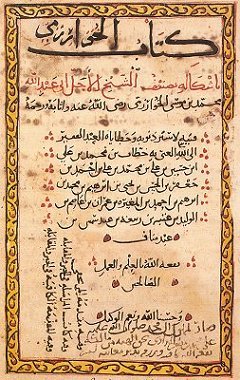In the seventeenth century, the evolution of natural philosophy was greatly supported by the progress of mathematical fields surpassing the supremacy of Euclidean geometry. Medieval universities provided minimal mathematical instruction, concentrating on basic texts and frequently not advancing beyond the fundamentals of Euclid’s “Elements.” Nonetheless, by the seventeenth century, novel mathematical realms such as algebra, analytical geometry, trigonometry, and calculus became essential for natural philosophers.
The progression of algebra was key, initially seen as the study of equations with ancient origins in diverse cultures. The contributions of Diophantus in the third century CE, alongside subsequent advancements in India and the Islamic region, culminated in al-Khwārizmī’s “al-Kitāb al-Mukhtaṣar fī Ḥisāb al-Jabr wal-Muqābalah” in the ninth century, which introduced the term “algebra.” Evolving from commercial arithmetic in Europe, algebra was redefined as an academic field, significantly pushed forward by figures like Cardano and Bombelli in the sixteenth and seventeenth centuries. The foundation laid by Viète provided a robust symbolic base for algebra, impacting subsequent educational reforms led by Christoph Clavius.
The advent of analytical geometry, primarily through Descartes’ “La Géométrie,” transformed mathematical representation by connecting algebraic equations to geometric shapes. Fermat independently formulated similar ideas, though his contributions were revealed posthumously. The Cartesian coordinate system originated from the efforts of Descartes and Fermat, becoming prominent through van Schooten’s extensive publications.
The formal establishment of trigonometry as a mathematical discipline originated from Hipparchus’ ancient studies on circle chords, enhanced by Ptolemaeus, and further developed by Arab mathematicians into the recognized trigonometric functions. This knowledge was reintroduced to Europe in the High Middle Ages and solidified by Regiomontanus’ thorough trigonometry, later improved and expanded with innovations such as Napier’s logarithms, crucial for trigonometric calculations.
Calculus, frequently misattributed solely to Newton and Leibniz, has its foundations in ancient techniques such as Eudoxus’ method of exhaustion, revived during the Renaissance. Trailblazers like Cavalieri, Torricelli, and others established foundational work in integration and differentiation, evolving them into what Newton and Leibniz later codified as calculus. The widespread integration of calculus profoundly impacted physics, despite Newton’s “Philosophiæ Naturalis Principia Mathematica” primarily relying on Euclidean geometry. By the conclusion of the seventeenth century, these advancements armed natural philosophers with a vast mathematical toolkit, transforming scientific exploration.
